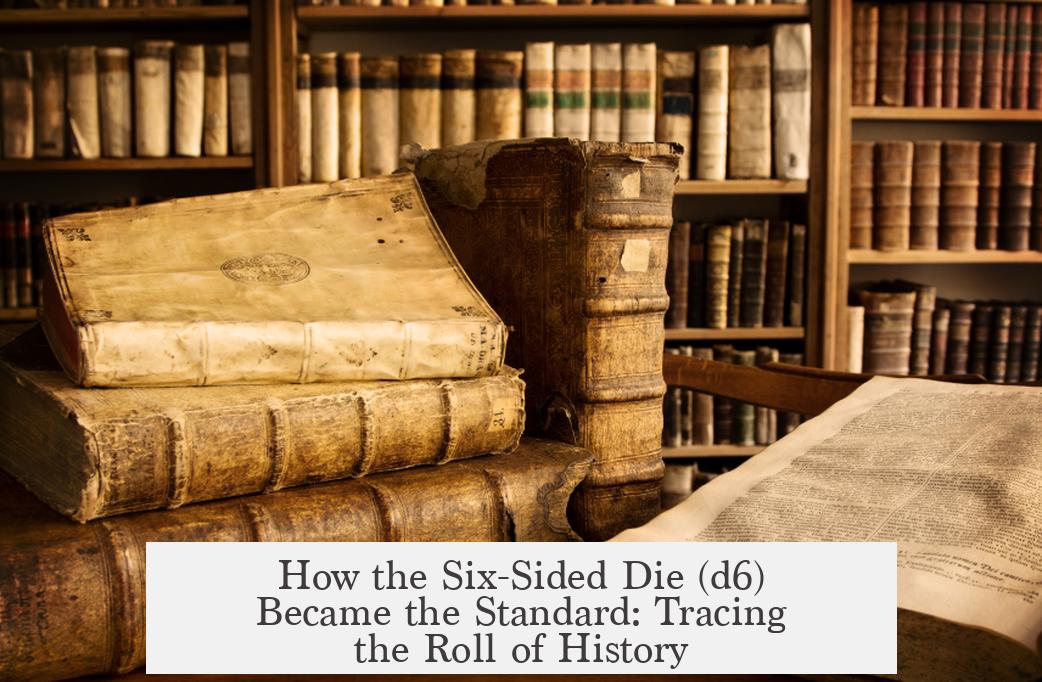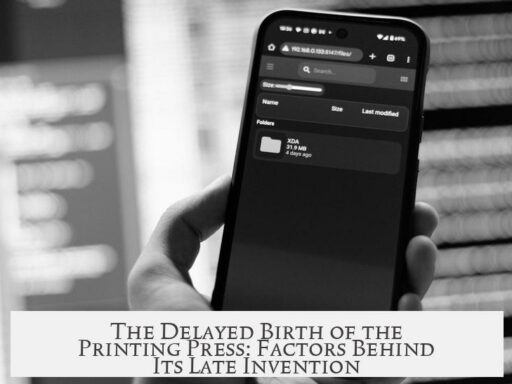The six-sided die (d6) becomes the most popular and standard die through a long process rooted in history, usability, and cultural adoption. Its standardization does not stem from a single event but evolves gradually by practicality and tradition.
The six-sided die has existed for thousands of years. Archaeologists find dice-shaped artifacts from ancient civilizations like Mesopotamia, Egypt, and the Indus Valley. These early dice were often cubes with markings on each of the six faces. Their cubic form lent itself naturally to stability and fairness in rolling.
Historical use of six-sided dice appears in many cultures, often for gaming, divination, and gambling. The simplicity of a cube made manufacturing easier compared to other polyhedral shapes. These factors contributed to its widespread adoption.
Over centuries, the six-sided die became embedded in games that shaped cultural entertainment, such as backgammon and various board games in Europe and Asia. By the 18th and 19th centuries, the d6 is firmly established as the common die in commercial gaming sets.
The rise of modern board and role-playing games in the 20th century reinforced the d6’s status. Game designers frequently use the six-sided die because players recognize and trust it. This familiarity helps the d6 persist as the standard despite the existence of many other dice types.
- Its cubic shape ensures balance and fairness in rolling.
- Manufacturing simplicity keeps production costs low.
- Widespread historical precedent from ancient gaming traditions.
- Continuous cultural embedding via popular games.
The precise timing of standardization is difficult to pinpoint. No single decree or patent defines the moment when the d6 became the default. Instead, it arises from a blend of natural preference, historical continuity, and practical design.
Today, the six-sided die is often called the “standard die” because it is the primary die most people encounter first. It serves as the baseline for probability in games and gambling worldwide.
- Originates from ancient civilizations, dating back thousands of years.
- Chosen for its cubic shape, ensuring stable and fair rolls.
- Becomes standard by tradition and widespread usage in board games.
- Popularized further during the rise of modern gaming in the 20th century.
- No exact date or event marks its standardization; rather, a gradual cultural process.
How the Six-Sided Die (d6) Became the Standard: Tracing the Roll of History

The six-sided die (d6) has become the most popular die, and is often treated as the standard die. But why? How did this little cube, marked simply from one to six, rise above all other dice to become the universal face of randomness? Let’s unravel this quirky tale of numbers, history, and human preference.
Dice are one of the oldest gambling tools known to humanity. Archaeological digs reveal dice dating back thousands of years. Yet, it’s the humble six-sided die—the d6—that dominates modern-day gaming, probability experiments, and even decision-making. What’s behind this global standardization?
A Peek Into History: The Origins of the Six-Sided Die

First things first, dice weren’t always cubed. Early dice were made from animal bones, stones, or ivory. Their shapes varied widely—from elongated polyhedrons to rounded objects. However, as far back as 3000 BC, people crafted six-sided dice, or something close to it, from knucklebones (“astragali”).
The reason for six sides? Practicality and symmetry. A cube is easy to manufacture, stack, and roll. Humans’ fascination with the number six possibly finds roots in ancient cultures: for example, Mesopotamians used the sexagesimal system (base 60), and six neatly factorizes into many smaller units, helpful for calculations and fairness in games.
A Reddit user under the handle /u/Antiquarianism in an AskHistorians discussion highlights that modern six-sided dice evolved over centuries but doesn’t pinpoint an exact moment of standardization. The truth is, the d6 didn’t become “standard” overnight. Instead, it happened organically through repeated use in various cultures.
Why Six Sides? The Practical Edge

Imagine rolling a die. Shapes like the d4 (four-sided) or d20 (twenty-sided) exist, but the six-sided die strikes a neat balance between simplicity and randomness.
- Ease of Manufacture: Cubes are easier to cut from materials like wood, bone, or plastic.
- Balanced Randomness: Six sides give adequate outcomes for games without overwhelming players with too many options.
- Portable & Familiar: Small cubes fit comfortably in hands and pockets.
- Clear Numbering: Faces and dots arranged with simple symmetry are easy to read at a glance.
Is it any surprise that games such as craps, backgammon, and Monopoly employ the d6? Its simplicity makes it accessible to kids and adults alike.
The Modern Standardization: A Gradual Cultural Agreement

By the time printed board games proliferated around the late 19th and early 20th centuries, the d6 was already deeply entrenched. It became the default rolling tool, often included in packages as part of gameplay sets.
During the gaming boom in the 20th century, especially with the rise of role-playing games (RPGs) in the 1970s, other dice types gained popularity (d4, d8, d10, d12, d20). Yet, the d6 remained the staple, the “go-to” die for simple games and household use.
The advent of plastic manufacturing brought cheap, precision cubes that standardized size and design. This industrial consistency helped cement the six-sided die’s role globally as the “standard die.”
Need proof? Walk into any game store worldwide, and the dice sets contain a d6 by default.
Practical Tips for Using the Standard d6

If you’re designing a game or want to revive the classic feel, start with a six-sided die. Its familiarity lowers the learning curve for players.
Also, remember that the d6 is excellent for teaching probability to kids—six equally likely outcomes make explaining odds straightforward.
Whether you prefer dots or numbers, the d6’s widespread recognition means you can borrow dice from almost any board game box lying around.
What About Other Dice? Isn’t Variety the Spice of Games?

Absolutely! The d6’s popularity doesn’t erase the existence or usefulness of other geometric dice. Just consider that the six-sided die remains the standard because it suits most casual, family-friendly settings.
In contrast, RPG players relish the diversity of polyhedral dice suitable for complex mechanics, but no other shape supplants the d6 for the general public.
The Universal Appeal of the d6
Why does the d6 matter beyond games? Psychologically, its neat, cube shape and manageable face count make it inviting. Rolling a six-sided die triggers anticipation without confusion.
It’s a symbol of chance ingrained in culture—emblems on casino tables, educational tools, and casual game nights. This familiarity generates trust and comfort, ironically turning the d6 into a sort of “standard tool for randomness.”
So, When Did Six-Sided Dice Become *The* Standard?
No single moment marks this event. Instead, the d6 rolled into the status of global standard over millennia by virtue of convenience, cultural adoption, and manufacturing ease.
The “standard die” status isn’t just history; it’s an ongoing story shaped by human choices and traditions. The six-sided die’s journey continues, one roll at a time.
“By becoming the world’s favorite cube, the d6 shows how sometimes simplicity wins the game.”
Final Thoughts
Next time you pick up a six-sided die, appreciate its ancient roots and cultural triumph. It isn’t just a random number generator. It’s a tiny artifact linking civilizations from Mesopotamia to your tabletop.
Why do you think the d6 became the standard die? Does any other die capture your imagination? Share your favorite dice stories or roll experiments!
When did the six-sided die (d6) first become the most common die?
The exact time is unclear. The six-sided die has long historical roots but no precise date marks its rise to standard status.
Why is the d6 considered the standard die today?
Its popularity grew because of simplicity and wide use in many ancient and modern games. Over time, it became the default choice.
How did the design of the six-sided die evolve historically?
Early dice were crafted from bones or stones. The cube shape was favored early because it offers equal chance for all faces.
Is there a clear historical record tracing the d6’s standardization?
No detailed records fully explain how the six-sided die became standard. Much knowledge relies on archaeological and historical hints.
Do modern tabletop games influence the d6’s status as the standard die?
Yes. Games like Monopoly and Yahtzee use d6 dice, reinforcing its common use in popular culture and games worldwide.




